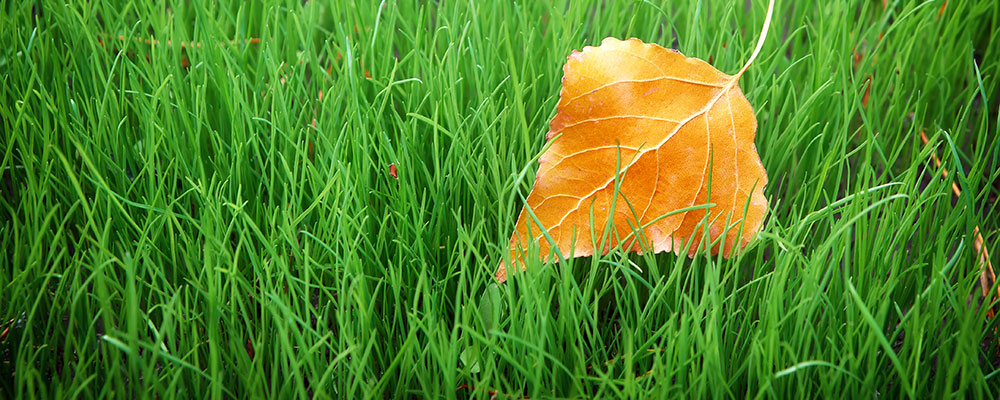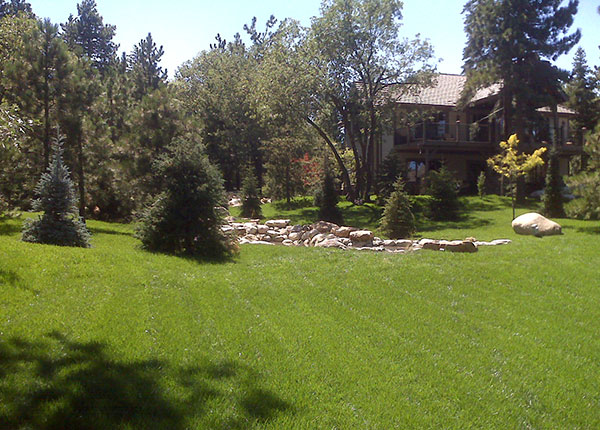Tips for Homeowners
Great advice to keep your lawn looking its best
Fall and Winter Maintenance

October 15 – April 15
Weather, general soil moisture conditions and local water restrictions may dictate the amount of water applied to turfgrass that was recently planted during these months. One might want to check with your water supplier for any limitations.
If newly installed turfgrass received ample, deep watering (to the depth of 6-8 inches) at time of installation and for a period of several weeks thereafter, the turfgrass, with normal winter precipitation, should allow it to endure the winter months. However, if the above steps were not taken, winter watering may be required, if local restrictions allow watering. Either way, if allowed, watering should be applied once the temperature is above 45 degrees and the soil is not frozen. Do not over-water or allow standing water after 2:30 p.m. for damage to the turfgrass could result.
One must keep in mind, that the later the turfgrass was installed, the less likely is it that the root system had a chance to establish enough to permit the plant normal moisture uptake. Therefore, mid-winter watering is advisable if normal snow fall does not occur. Normally, the month of March temperatures can provide an opportunity to utilize your hose and sprinkler to assist the turfgrass in getting established, if we have not received sufficient winter moisture.
April 15 and the Summer Months
Your new lawn should have come through the Winter months in good shape. Now is the time to start your lawn off to becoming well established and healthy for the Spring and Summer months. Here are some guidelines to follow to have a healthy, weed and disease-free lawn.
Turfgrass
Both bluegrass and tall fescue require the same treatment the first year.
Fertilizer/Herbicide
A high quality, slow release nitrogen fertilizer with 3-5% iron (20-10-5+5% Fe), should be applied at least 3-4 times the first year after planting to permit proper growth, starting with the 1st application on/about April 15th. Apply the rate as outlined on the bag label. Spot application of herbicides may be applied to problem weeds. Your local garden center can assist you with the proper selections of fertilizer, herbicide and problem area identification, diagnosis and treatment.
Watering
Your sprinkler system should be monitored, checked for leaks, missing/broken heads and adjusted at the start of the season and monitored biweekly. Water application should be applied according to local regulations or less depending upon the moisture received from rain. New EvapoTranspiration (E-T) sprinkler controllers with moisture and temperature sensors are an ideal way to apply the correct amount of water, for it adjusts automatically to daily conditions as well as adjusting biweekly to historical data. Otherwise, your local newspaper should provide you with proper E-T rates to apply proper amounts of water to your lawn to prevent wasting of our precious water!
Mowing
Mowing with a sharp mower blade should start once your turfgrass reaches 2-1/2” in height. During the summer months, one might want to mow at a 3” height to conserve moisture as well as prevent weed invasion.
Aeration
Core aerification (soil/thatch core removal) can be successfully done in mid-late September or the following Spring to assist in increasing.
Get A Quote Online
Getting a quote for your sod is easy and convenient. Just let us know how much you need and when you need it. We can even arrange to deliver it right to your work site.

